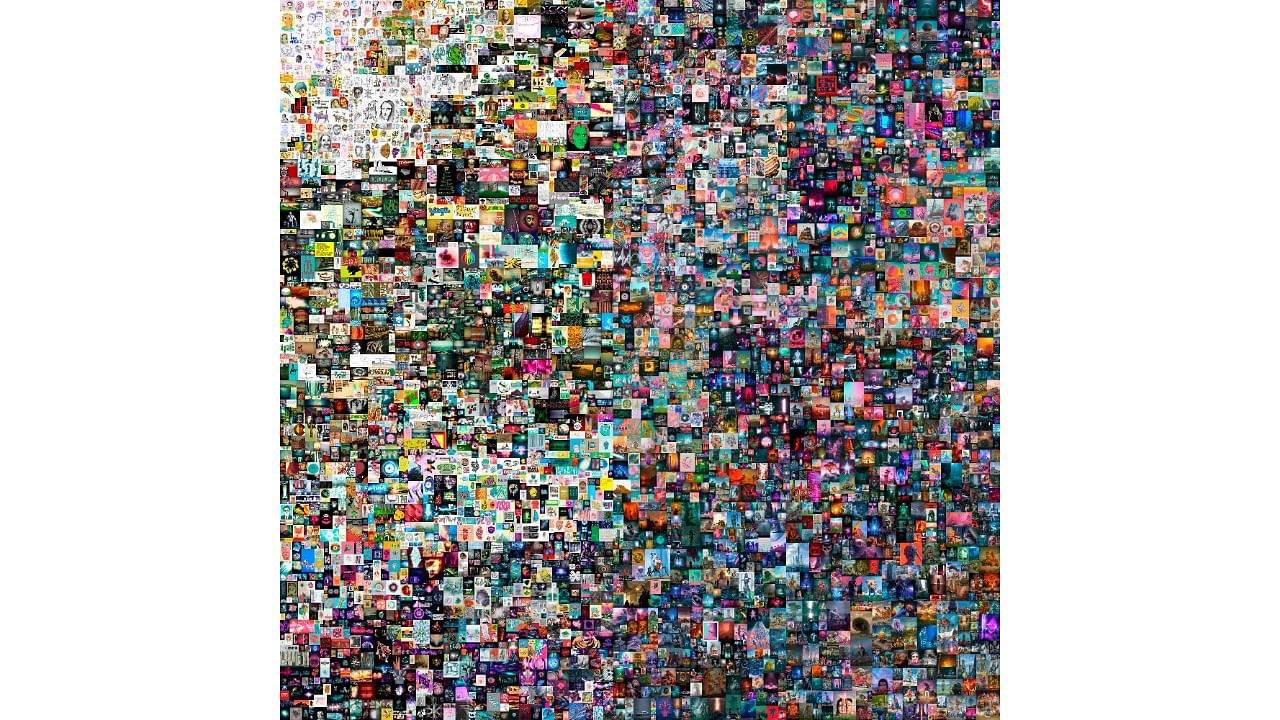
With images, paintings, video clips, tweets selling for millions, NFTs have set off a revolution in the world of cryptocurrency.
Digital artist Beeple recently sold an artwork for nearly $70 million and Twitter CEO Jack Dorsey is auctioning his first-ever tweet as an NFT with the top bidder willing to pay $2.5 million for it.
So what are NFTs?
Before we go to NFTs, let's understand what fungibility means. Fungibility refers to an asset's ability to be exchanged with a similar asset without sacrificing its value.
An NFT, or a non-fungible token, is a digital object that can be a drawing, animation, piece of music, photo, or video with a certificate of authenticity created by blockchain technology. The virtual object, which is actually a computer file, can be exchanged or sold with its certificate. Hence, all NFTs have a unique quality and a distinct value from any other similar token.
Artists, musicians, influencers and sports franchises are using NFTs to monetise digital goods that have previously been cheap or free. The technology also responds to the art world’s need for authentication and provenance in an increasingly digital world, permanently linking a digital file to its creator.
One of the obstacles preventing digital objects from becoming mainstream collectables was the fear of copies. In the case of NFTs, the digital record is saved on blockchain ledgers that can be read by anybody looking to find out the owner of the asset.
NFTs can still be copied, of course, but only one file has a certificate of authenticity, which cannot be replicated.
How is NFT different from Bitcoin?
An NFT (non-fungible token) is a special cryptographically-generated token that uses blockchain technology to link with a unique digital asset that cannot be replicated.
Non-fungible tokens differ from popular cryptocurrencies such as Ether (ETH), Bitcoin (BTC) and Monero (XMR), because unlike other cryptocurrencies, you cannot exchange NFTs but only buy and sell it on special marketplaces.
How to bid?
Any internet user can go to a dedicated platform, like Rarible or OpenSea, to upload the file which will become the NFT. Fees are usually less than $30 per file, paid in cryptocurrency.
Once the NFT is on the platform, the creator can sell it. The creator also has the option of setting a percentage that he or she will receive from all future sales of the file.
When did this become a thing?
The technology for NFTs has been around since the mid-2010s but hit the mainstream in late 2017 with CryptoKitties, a site that allowed people to buy and “breed” limited-edition digital cats with cryptocurrency.
Now, with the value of cryptocurrencies reaching record highs, some of the same investors are buying and trading NFTs, often for eye-popping prices. Beeple is the most high-profile artist to make a gigantic sale, but there are now plenty of illustrators, video and graphic artists selling work at high prices.
How big is the market?
According to the NFT Report 2020, published by L’Atelier BNP Paribas and Nonfungible.com, the value of the NFT market grew by 299 per cent in 2020, when it was valued at more than $250 million. But the first few months of 2021 have already seen astonishing sales, even before this auction.
What about art theft?
The technology responds to the art world’s need for authentication and provenance in an increasingly digital world, permanently linking a digital file to its creator. However, some artists have raised questions over who can make an NFT in the first place. According to a report by The Guardian, some have complained of having found their work ending up in the “control” of people who had nothing to do with its creation.
Who's cashing in on NFTs this year?
* A digital artwork by artist Beeple was sold for nearly $70 million at British auction house Christie's on March 11. It was the first sale ever in a major auction house of a piece of art that does not exist in physical form.
* Twitter boss Jack Dorsey listed his first tweet -- "just setting up my twttr" -- at auction, with bidding Saturday reaching $2 million.
* Musician Grimes sold some animations she made on a website called Nifty Gateway for a total of more than $6 million.
* Super Bowl-winning tight end Rob Gronkowski is launching his own digital trading cards as NFTs in March, telling Reuters he expects millions.
* A fan paid $2,08,000 to acquire a video clip of a Lebron James slam dunk.
* A crypto art rendition of the famous Nyan Cat meme was sold for nearly $5,90,000.
* A 10-second video clip featuring an image of a fallen Donald Trump, also by Beeple, sold for $6.6 million on Nifty Gateway.
* The rock band Kings of Leon is set to be the first group to release an album as a series of digital tokens. The album, When You See Yourself, will be available starting Friday in three NFT formats, each with extra enhancements, from $50.
Some experts expect price corrections as the NFT market takes shape, but no one sees the segment collapsing. Many even believe that a lot of NFTs are undervalued due to the nascent stage of the market.
The purchaser of "Everydays," known only by the pseudonym Metakovan, called the work "the crown jewel" of this generation and estimated that it is worth $1 billion.
"My prediction is that over the coming years we'll see the consensus shift on digital items, from 'these are worthless and not real' to 'this is the best way to prove ownership, scarcity, and authenticity'," investor Jonathan Bales wrote in what's considered the definitive text on the subject in early January.
"I'm convinced NFTs are the future of collecting. The most exciting aspect, to me, is that the party is just getting started," he said.
(With agency inputs)